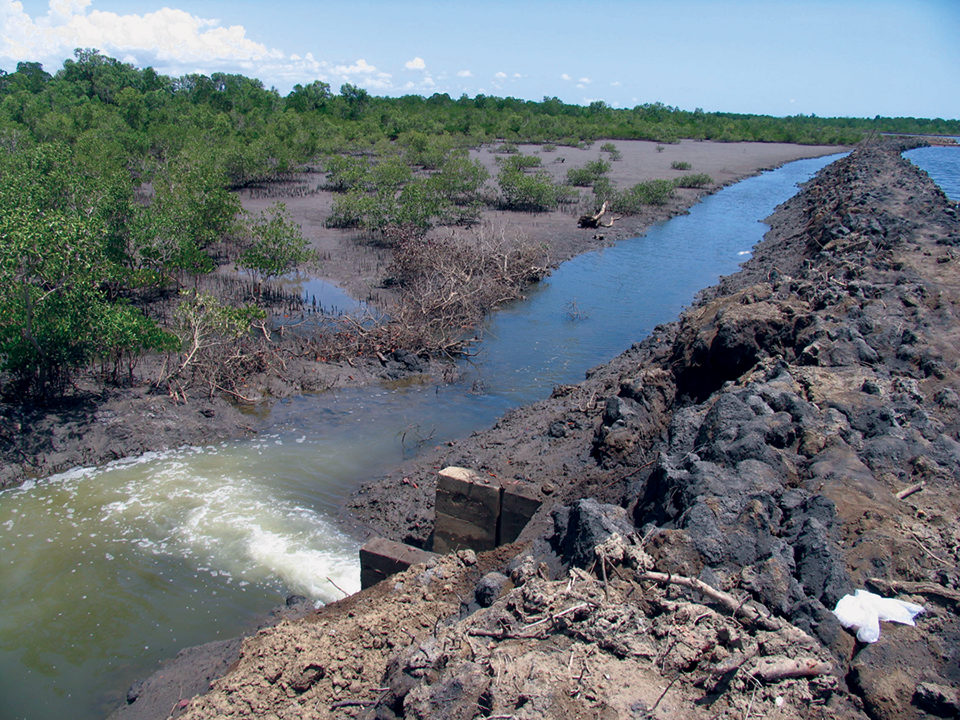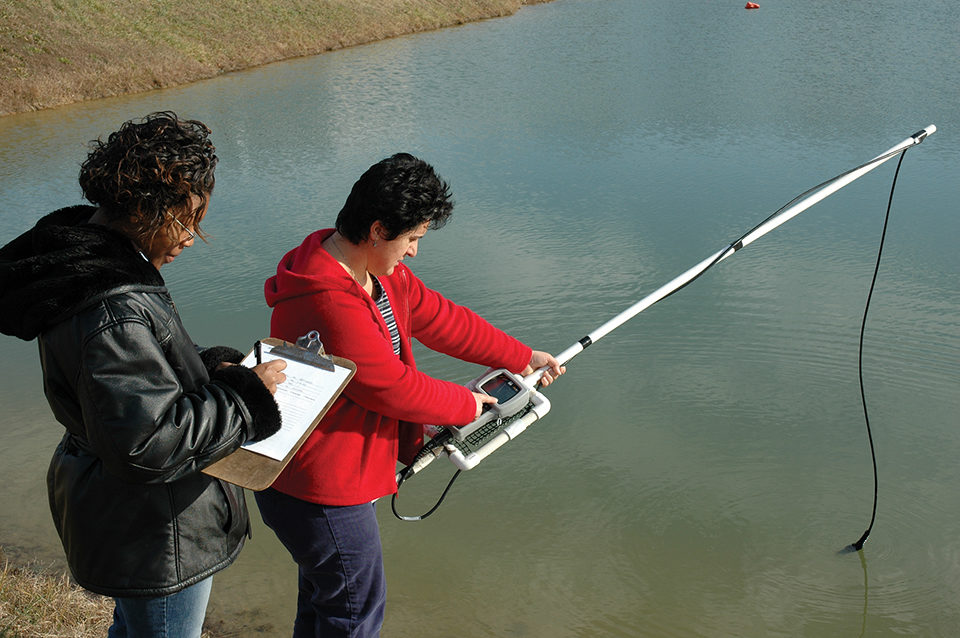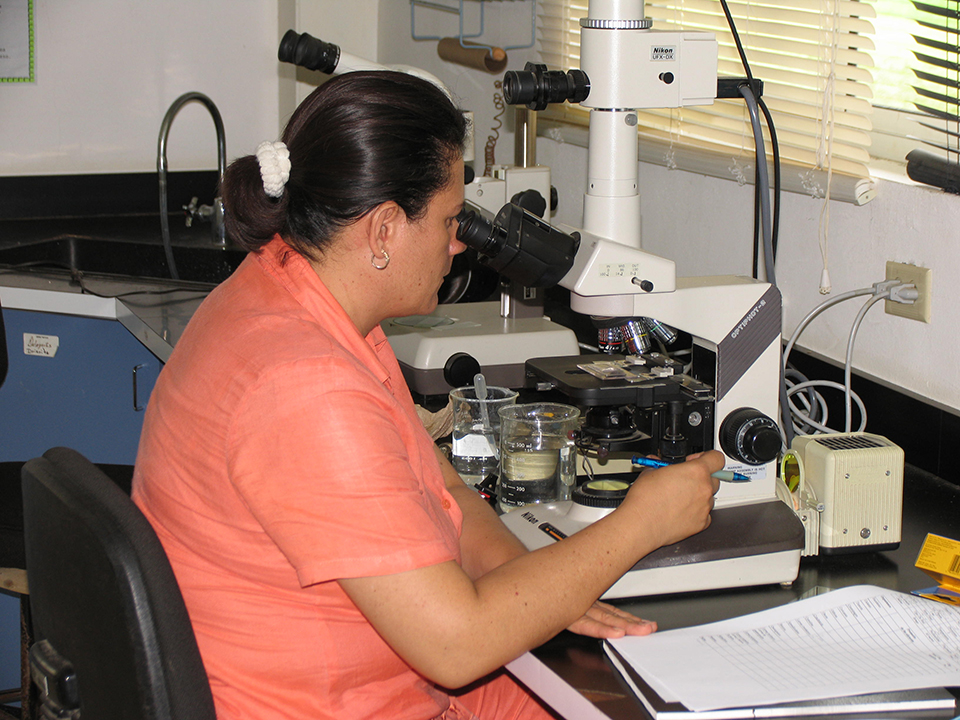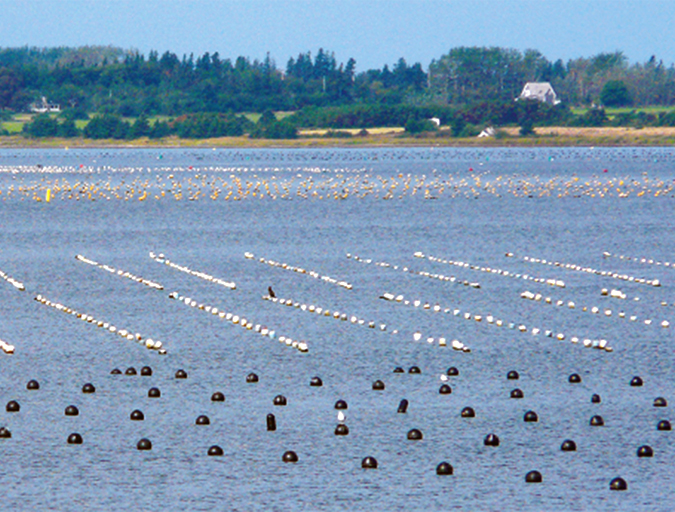Nitrogenous compounds, phosphates are limiting factors in eutrophication

Waste material – mostly organic solids, nitrogenous compounds, and phosphates – in aquaculture effluents generally occurs in low concentrations but relatively high water volumes when compared with other industrial and domestic effluents.
Relatively small percentages of the nitrogen, phosphorus, and organic carbon supplied in manufactured feeds are recovered in the harvested product. Consequently, the concentrations of nutrients and organic matter in pond waters and on pond bottoms increase as fertilization and feeding rates increase. The discharge of unused and unmetabolized nutrients and organic matter can cause eutrophication and other ecological changes in receiving waters.
Eutrophication and benthic enrichment
Nitrogenous compounds and phosphates are the most important compounds, because they are the limiting factors in eutrophication. However, they are also the most easily controlled by feed management.
Nitrogen and phosphorus settling to the sediment allow microbial blooms and ammonia to stimulate phytoplankton blooms in the water column. These particles are stirred into the effluents when ponds are drained. In colder waters, phytoplankton growth can be slowed to allow higher levels of nitrogen compounds in effluents.
The water quality variables with the highest concentrations in pond effluents relative to the normal criteria in U.S. National Pollutant Discharge Elimination System (NPDES) permits are total dissolved solids, total phosphorus, and biochemical oxygen demand. These variables are at especially high levels in the final 25 percent of effluents when ponds are completely drained.
Eutrophication is the major problem associated with nutrient runoff. The effects of the organic matter are multiplied by resulting phytoplankton blooms that often increase organic matter by two to four times the original metabolic wastes.
For example, Boyd (1985) estimated that for each 1,000 kg of channel catfish produced, about 3,000 kg of organic matter were produced by phytoplankton. Further, a 1-ha pond raising 5,000 kg of catfish had a chemical oxygen demand of 18,000 kg as a result of phytoplankton in addition to the expected chemical oxygen demand of 9,000 kg due to the wastes.
This example only considered resource demands within the pond itself, but some phytoplankton can kill fish through toxins, clogging gills, or oxygen depletion. Macroalgal blooms can reduce water flow and compound oxygen depletion. Although these effects may be diluted when added to a natural waterway, the effect is still an unnatural demand on available resources.

Bacteria and viruses
In addition to nutrients and phytoplankton, bacteria and viruses are also of concern. Naturally occurring bacteria from the environment and the guts of cultured fish stocks thrive in nutrient-rich waters and the surface layers of sediments. Included in this group are Enterobacteriaceae and fecal Streptococci, which threaten swimming beaches as well as wild fauna.
There is a direct correlation between bacterial diversity and nutrient content. Viruses are a special concern in non-native stocks, where introduced species and hybrids may bring new viral strains into an area. Even if the potential for introduced viruses is reduced, periodic outbreaks of viruses are not uncommon.
Vibrio bacteria are major fish pathogens that are particularly problematic in aquaculture settings. Uncontrolled proliferation of farm operations and related aquatic environmental impacts appear to have made a direct contribution in the dispersion of Vibrio pathogens in receiving water bodies.
Control chemical use
Most aquaculture facilities strive to control water quality and the health of their stocks. However, attempts at control have risks of their own. In addition to therapeutic chemicals and vaccines, some aquaculture facilities use disinfectants and other water treatment chemicals.
With intensified production comes an increase in dependency on chemicals for control. Concern is growing over the use of antibiotics for disease control, as some pathogens may become resistant. Even when therapeutic doses are administered in food pellets, a significant amount can pass through the fish.
Minimizing impacts
The main goals regarding effluent management are to minimize impacts to the environment while maintaining productivity. Fortunately, most of these strategies are as beneficial for the aquaculturist as they are for the environment.
Both effluents and production costs can be greatly reduced by using stock-specific feeds distributed in smaller quantities several times a day. Savings on feed are combined with savings on herbicides and lower aeration demands because of lower concentrations of phytoplankton.
Coloso et al. (2001) found that soluble phosphorus discharges in effluent water were reduced in fish fed diets that contained little or no fishmeal, or diets supplemented with a low level of dietary phosphorus. The dietary combination of low phosphorus and high vitamin D3 decreased soluble and fecal phosphorus levels in effluents from rainbow trout, indicating that increasing the bio-availability of phosphorus can eliminate excess phosphorus in effluent water.
Dispersing and diluting effluents into receiving waters only delays impacts to the detriment of a wider area. Relying on water exchange is often a mismanagement of water resources. By carefully managing pond water quality and reducing stress on stocks, less water needs to be exchanged.
The use of retention ponds allows greater water management flexibility by conserving and treating effluent water for reuse. Allowing effluents to settle allows excess nitrogen and phosphates to be metabolized and solids to settle out. Harvesting stocks without draining ponds between crops can reduce nutrient and organic matter discharges by over 60 percent. Although the release of some water may be unavoidable, managers should realize that reusing water is utilizing a resource, whereas releasing effluents is creating a liability.
Integrated systems may provide solutions to many of aquaculture’s problems. Since no organism lives naturally in a vacuum, stocking production facilities with complementary species seems logical.
For instance, to control algae and plant growth, grass carp or other herbivores can be raised and harvested along with primary stock. Suspension-feeding bivalves are useful in filtering out phytoplankton. Not only are the secondary stocks beneficial in controlling water quality, but they often are valuable products, as well.
Best management practices
Best management practices (BMPs) also offer great promise in reducing potential environmental impacts. BMPs reflect the most technically practical and economically feasible methods to reduce impacts and limit costs at aquaculture facilities. One primary goal is to develop simple effluent treatment systems that reduce loads of organic matter, suspended solids, and nutrients in effluents to prevent pollution of receiving waters.
The best methods to prevent soil and water quality problems include selecting a site with appropriate soils and an adequate water supply, and maintaining moderate fish densities and feeding rates. Secondary management techniques to prevent soil and water quality imbalances include liming, fertilization, and aeration. Agricultural irrigation, created wetlands, settling basins, and biological filters also are practical methods for improving the quality of effluents from ponds.
Although the benefits of these simple suggestions may seem obvious, many producers resist change or are intimidated by diversification and start-up costs. One solution for greater adoption of best management practices may be increased regulation of effluent standards.
Editor’s Note: Cited references are available from the authors.
(Editor’s Note: This article was originally published in the September/October 2006 print edition of the Global Aquaculture Advocate.)
Now that you've reached the end of the article ...
… please consider supporting GSA’s mission to advance responsible seafood practices through education, advocacy and third-party assurances. The Advocate aims to document the evolution of responsible seafood practices and share the expansive knowledge of our vast network of contributors.
By becoming a Global Seafood Alliance member, you’re ensuring that all of the pre-competitive work we do through member benefits, resources and events can continue. Individual membership costs just $50 a year.
Not a GSA member? Join us.
Author
-
Gulnihal Ozbay, Ph.D.
Delaware State University
Department of Agriculture and Natural Resources
1200 North Dupont Highway
Dover, Delaware 19901-2277 USA[117,100,101,46,117,115,101,100,64,121,97,98,122,111,103]
Tagged With
Related Posts

Responsibility
A look at various intensive shrimp farming systems in Asia
The impact of diseases led some Asian shrimp farming countries to develop biofloc and recirculation aquaculture system (RAS) production technologies. Treating incoming water for culture operations and wastewater treatment are biosecurity measures for disease prevention and control.

Aquafeeds
Analyzing the hydrostability of shrimp feeds
The physical integrity and nutrient leaching of shrimp aquafeeds are important aspects in their quality control. The water stability of shrimp aquafeeds is often evaluated in various subjective manners. This analytical procedure provides a baseline for the aquafeed manufacturer to assess product quality.

Health & Welfare
Antimicrobial resistance: Aquaculture to humans, humans to aquaculture?
The transfer of resistance from an aquaculture pathogen into a human enteric bacterium has been demonstrated in research and may be happening in the real-world environment.

Innovation & Investment
Aquaculture in Canada: status, perspectives
Canada exports farmed seafood products to more than 22 countries and is the main seafood supplier to the U.S. market. Finfish, primarily salmon, production is strong and shellfish production is growing, but diversification will be imperative to maintain competitiveness.



